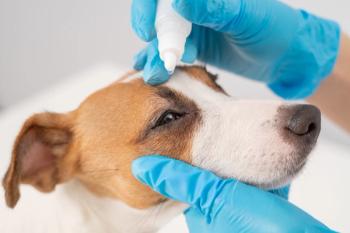
Students: Advocate for cats
Cats are the most popular modern pet, according to the American Veterinary Medical Association's (AVMA) latest "U.S. Pet Ownership and Demographic Sourcebook." But even though they outnumber dogs in homes, it's a different story when it comes to veterinary care.
Untitled Document
Stop the decline: Experts hope that education, advocacy can reverse a downward trend in feline veterinary visits.
Cats are the most popular modern pet, according to the American Veterinary Medical Association’s (AVMA) latest “U.S. Pet Ownership and Demographic Sourcebook.”But even though they outnumber dogs in homes, it’s a different story when it comes to veterinary care.
More than 81 million households own cats, compared to 72.1 million dogs, according to the sourcebook, yet cats see veterinarians half as often as dogs. Onethird of cats never see a veterinarian at all, and even kittens are missing out on basic care.
This news comes at a time when overall veterinary expenditures are slowing and pet owners are seeking veterinary care less frequently:Dog veterinary visits slipped to 1.5 times a year from 2001 to 2006, but cats saw veterinarians even less, averaging only .07 visits per year.
The veterinary profession is taking steps to fix the inequity, and students can help.
In February 2008, the American Association of Feline Practitioners (AAFP) convened a landmark CATalyst Summit to determine what could be done to improve the health and well-being of cats. Fifty participants representing veterinary practices, associations,humane societies, shelters, industry and the media explored feline issues and looked for ways to make the future a better place for cats. They identified lack of awareness of cat health care needs and the mistaken belief that cats are self-sufficient and require little care as two major factors that would need to be addressed to encourage responsible pet ownership and feline veterinary care.
The CATalyst group encourages everyone in the profession to create a grassroots surge to lift feline health care.These are some of the ways veterinary students can get involved:
- Learn how to create a welcoming, cat-friendly environment for cats and their owners. Do simple things, like taking the top of the cat carrier off if the cat won’t come out; putting towels on the cold steel tables for cats to sit on; taking a moment to get to know the cats before handling them. If cats need to be hospitalized, ensure that they are in the upper cages and not on the floor. To comfort them during their stays, give them a place to hide and a perch to sit on (a small, sturdy cardboard box in their cage can provide both). Tips like these and more can be found online in the downloadable AAFP Feline Behavior Guidelines at
http://catvets.com/professionals/guidelines/publications/?Id=177 .
- Cat owners appreciate cat-specific handouts and online information. Be sure to read them yourself so you know what is out there, can answer common questions and provide good information on cats when you talk with clients in the veterinary teaching hospital as well as with your family and friends.
- One of the primary reasons owners hesitate to bring their cats to veterinarians is the difficulty of transporting them. Offer tips on how to get cats into carriers so owners don’t get scratched or stressed in the process. Share these ideas with others so everyone can teach cat owners how to do this.
- Learn about cat behavior, especially the subtle signs of pain so you can educate cat owners. The American Animal Hospital Association (AAHA) and AAFP co-published guidelines on pain management along with a piece titled the “Subtle Signs of Sickness.” Both can be found online at
www.healthycatsforlife.com orwww.catvets.com .
- Watch for new AAFP cat life-stage health guidelines for veterinary teams to learn what the experts recommend for feline wellness, and talk to your professors about them. Contact AAFP to find out if there is a student chapter at your school.
- Watch for the new health-care guidelines for cat owners.These will match the AAFP’s guidelines, and encourage responsible cat ownership and health care. Nationally syndicated pet columnist Steve Dale will write the pet-owner guidelines, which will be underwritten by a grant from Hill’s Pet Nutrition.
- Seize every opportunity to learn about cats, cat medicine and cat behavior while you are in school so you will feel confident in practice when you see cats and can make them and their owners feel welcomed and at ease.
- Adopt a cat. There’s no better way to learn about cats than to have one of your own.
- Use the Internet to spread the positives about owning cats and what they need to keep them healthy and happy.
Be an advocate
One final note: Shelter studies cite inappropriate feline urination as the No. 1 behavior problem that leads to cat relinquishments. Too often, this can be a death sentence for these cats,once they’re classified as behavior problems and considered unfit for adoption.
Coincidentally, information from the pet insurance industry says that feline urinary tract infections are the No. 1 health insurance claim for cats. Together, these facts suggest that while many cats suffer from feline lower urinary tract disease and might receive treatment, treating their illness alone might not be sufficient to save the cat. Behavioral problems need be addressed as well.
Students have the ability to advance positive change for cats. Learn as much as you can about feline behavior so you can counsel cat owners. Of course, you will be saving lives. Prepare to be a cat advocate in practice and ensure a brighter future or yourself, your clients and especially the cats.
Newsletter
From exam room tips to practice management insights, get trusted veterinary news delivered straight to your inbox—subscribe to dvm360.




